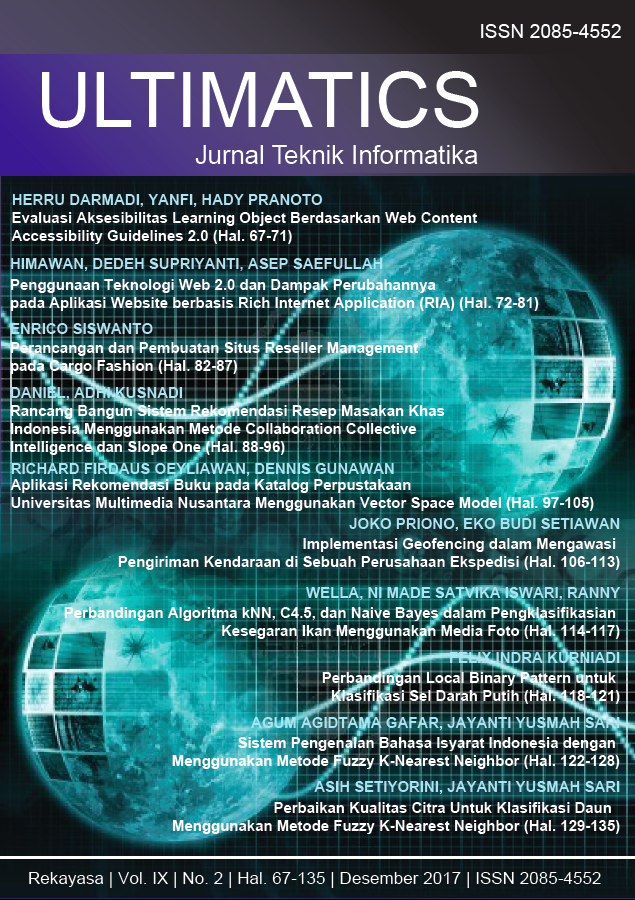Perbaikan Kualitas Citra Untuk Klasifikasi Daun Menggunakan Metode Fuzzy K-Nearest Neighbor
DOI:
https://doi.org/10.31937/ti.v9i2.688Abstract
Plants have many benefits for human life such as food, medicine, industry, environmental protection, even oxygen provider for other organisms. To know the types of plants is necessary. Classification of plants can be done with additional features of leaves in these plants. In determining whether or not the image identification process is needed a process of image quality improvement. Improved image quality is used to prepare the image in an ideal form so as not to cause problems and interpellation results as well. In this research the method used is Fuzzy K-Nearest Neighbor (FKNN) method. The Fuzzy K-Nearest Neighbor (FKNN) method is the most objective method. Based on the results of experiments conducted, Fuzzy K - Nearest Neighbor (FKNN) modeling method was obtained for 93% completeness.
Keywords-Image quality improvement, Fuzzy KNearest Neighbor (FKNN)
Downloads
Downloads
Published
How to Cite
Issue
Section
License
Authors retain copyright and grant the journal right of first publication with the work simultaneously licensed under a Creative Commons Attribution-ShareAlike International License (CC-BY-SA 4.0) that allows others to share the work with an acknowledgement of the work's authorship and initial publication in this journal.
Authors are able to enter into separate, additional contractual arrangements for the non-exclusive distribution of the journal's published version of the work (e.g., post it to an institutional repository or publish it in a book), with an acknowledgement of its initial publication in this journal.
Copyright without Restrictions
The journal allows the author(s) to hold the copyright without restrictions and will retain publishing rights without restrictions.
The submitted papers are assumed to contain no proprietary material unprotected by patent or patent application; responsibility for technical content and for protection of proprietary material rests solely with the author(s) and their organizations and is not the responsibility of the ULTIMATICS or its Editorial Staff. The main (first/corresponding) author is responsible for ensuring that the article has been seen and approved by all the other authors. It is the responsibility of the author to obtain all necessary copyright release permissions for the use of any copyrighted materials in the manuscript prior to the submission.















